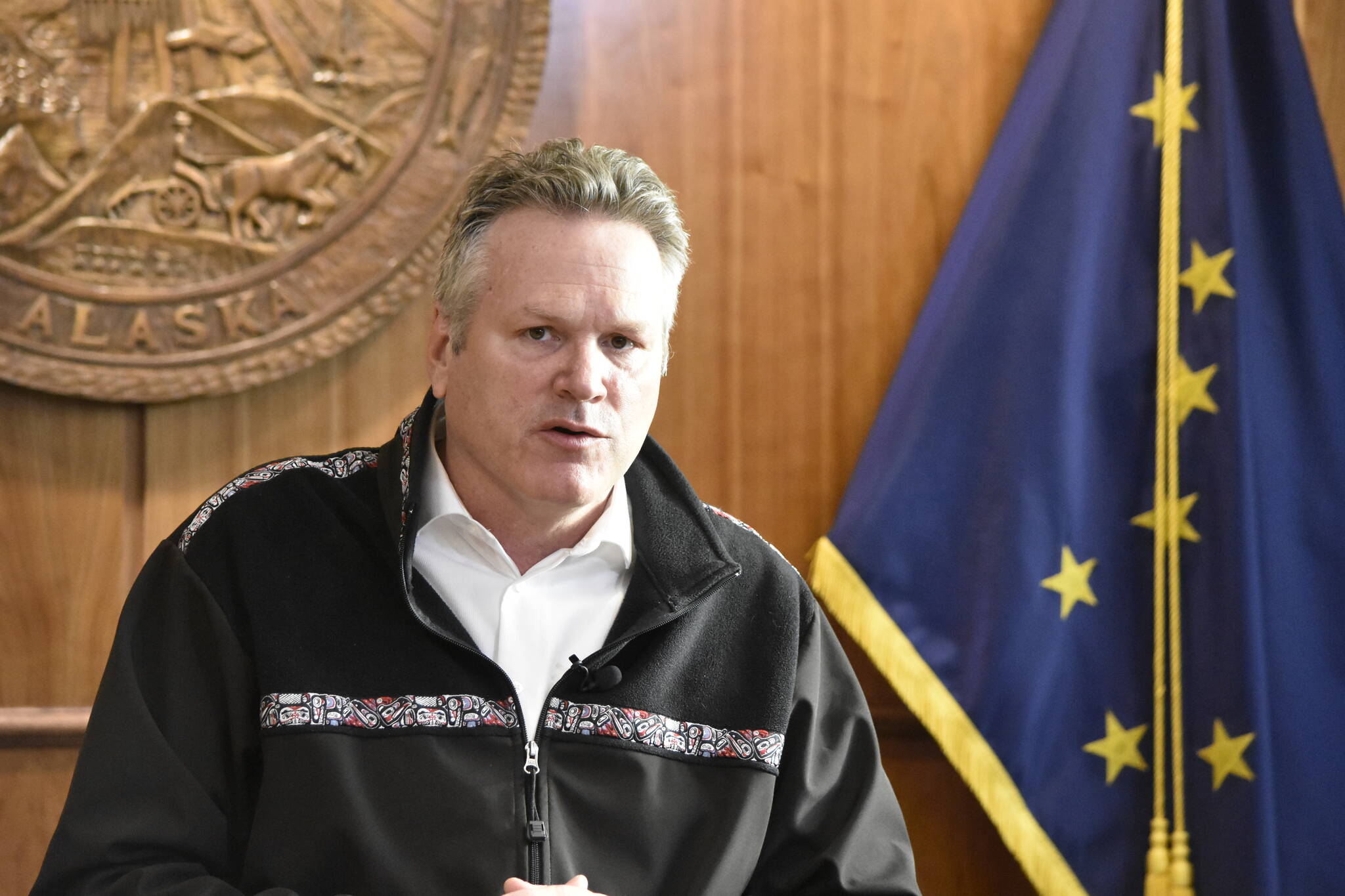By Rich Moniak
Last week, Gov. Mike Dunleavy posted a 15-second video ad on Facebook and Twitter that attempted to shame Sen. Bert Stedman, R-Sitka, into supporting his 50-50 plan for the Permanent Fund. It was a foolish case of throwing a rock from the glass house of his governorship.
The first headline of the ad reads “In 2017, Senator Bert Stedman Supported the 50-50 Plan.” Then comes a very short excerpt from the audio recording of a State Affairs Committee meeting that then-Senator Dunleavy presided over.
“I think they’re going to be very receptive to a constitutional amendment and I’d personally like to see one” Stedman says. Dunleavy asks him “So you want to support a constitutional amendment for this concept.” Stedman replies “For this, yes.”
The final image reads “Honor Your Word. Support the 50-50 Plan.”
Stedman was speaking about a similar idea in a bill he sponsored in 2017. It would have withdrawn a half percent less from the Permanent Fund than what Dunleavy has proposed. And guarantee at least half go towards our annual dividend.
But Stedman also understood that as “essential foundation of a fiscal plan,” some additional measures were needed to make it complete and sustainable. He expected the legislature to consider including taxes and identify specific long-term budget reductions.
Dunleavy, however, refuses to discuss the detailed budget cuts or new revenue needed to close the huge budget deficit his 50-50 plan would create.
So, shame on Dunleavy for taking Stedman’s statements out of context.
Now, let’s look at how Dunleavy has dishonored his own past statements.
The most obvious are his promises to reinstate the 1982 statutory formula as the basis of our PDFs and retroactively pay us for the three years that formula wasn’t used. Obviously, neither ever happened. Now, without explaining why he broke those promises, he’s proposed a new formula that will result in a smaller dividend.
“I do not have a specific program I would like to reduce or eliminate” Dunleavy told the Fairbanks Daily-Miner 10 weeks before the election. “I do want to audit all programs to make sure they are delivering the services as promised in the most efficient way possible.”
But two months after being sworn into office, and before such audits could have been done, he proposed a budget that dramatically cut specific programs and eliminated others.
The University of Alaska’s budget was reduced 40%. Direct funding of public-school classrooms was down $330 million. The Senior Benefits Program and Power Cost Equalization Fund were to be eliminated.
Despite promising to “make sure” the Alaska Marine Highway System “remains the backbone of transportation in Southeast,” Dunleavy wanted to cut $98 million from the agency’s budget — a two-thirds reduction. The system hasn’t functioned adequately since.
There’s one basic reason why Dunleavy turned to such drastic budget cuts instead of honoring his word. The fiscal vision he promoted while campaigning was never feasible.
One example of why it wasn’t is the claim he often made that the budget could easily be reduced $200 million by eliminating “over 2,000 funded but unfilled positions in state government.” That savings never materialized because he never understood the accounting for those unfilled positions. They didn’t add a dime to state spending.
But instead of admitting any mistakes, Dunleavy came up with an excuse that doesn’t hold water. He claimed his original plan was based on “a far more favorable revenue picture. … In October 2018, the price of oil was trending at nearly $85 per barrel.” But by the time he took office, it “had plummeted to near $55 per barrel, cutting over $1.7 billion in potential revenue.”
The truth is the only time oil prices were over $80 was from the last week of September to the middle of October. It averaged $75 during the prior seven months and was below $70 during the first six months of his campaign.
Besides, as any responsible Alaskan policymaker knows, you can’t build a sustainable budget plan on a brief snapshot like that because oil price volatility is a permanent fixture in our market economy.
Stedman certainly understands that. He doesn’t need phony excuses to defend himself. All Dunleavy accomplished by accusing Stedman of breaking his word is add to his own long record of dishonorable deceits.
• Rich Moniak is a Juneau resident and retired civil engineer with more than 25 years of experience working in the public sector. Columns, My Turns and Letters to the Editor represent the view of the author, not the view of the Juneau Empire. Have something to say? Here’s how to submit a My Turn or letter.

